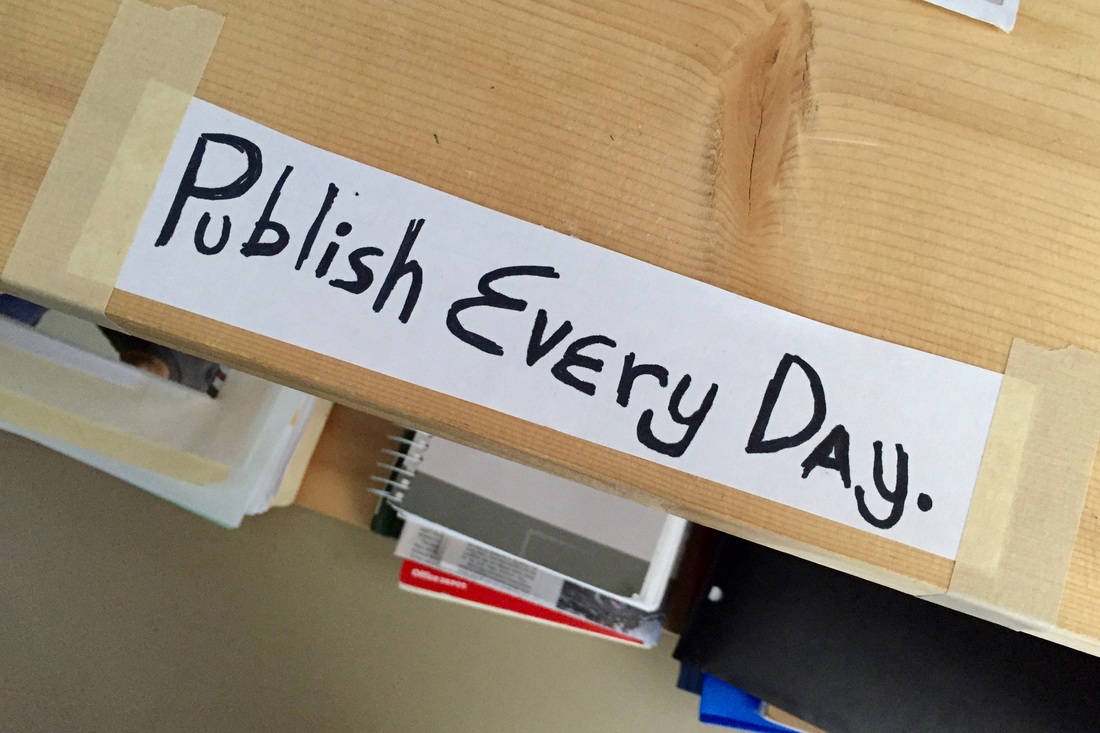|
Go talk to a stranger. These five words strike fear into the heart of any introvert. No, fear undersells the emotion. Terror is a better word. Yet, talking to strangers is an integral component of my job as a journalist. Street reporting is a major part of my work for Milwaukee Neighborhood News Service because we focus on providing a voice for central city Milwaukee neighborhoods. The news service's "On the Block" series gives local residents a platform to discuss what is important to them.
While covering the recent closure of the Mitchell Park Domes in Clarke Square, I needed to talk to local residents about what they hoped would happen to the Domes. That meant hitting the streets, racking up steps on my pedometer and getting the story. Not an easy task. A year's worth of street reporting has by no means made me an expert but I have found some strategies work better than others for approaching interview subjects on the street. Here is what I have learned. Smile, do not startle The people who say they enjoy scary movies are liars. Call them out on it. No one likes being scared. The same is true of interview subjects. Approaching a stranger from behind, only to startle them when you introduce yourself is a surefire way to get a rejection. Instead, always try to approach a stranger so that she or he can see you coming. Flash your pearly whites and move slowly. Would you be friendly to a stranger speed-walking at you with a scowl? First impressions can make the difference in getting an interview subject comfortable enough to talk to you. Know your elevator pitch Cue the eye roll. Yes, elevator pitches are synonymous with networking events, which the majority of humanity has agreed are awful. However, how you introduce yourself and explain what you are doing can win you the interview. Clearly stating your purpose is another step in making the person comfortable. My opening goes something like this: "Hello, my name is Wyatt Massey. I'm a reporter for the Milwaukee Neighborhood News Service. We are doing a story about ______ (story topic) and I was curious if you would be willing to answer a few questions about what is going on with ______ (story topic)?" Quick and easy to remember, those are the traits of a successful pitch. If elevator pitches make you queasy (I understand your pain), remember that you are doing it for the story, not self-promotion. Take it slow The elevator pitch can be quick. You know the story and you want reactions. Yet, the person you are talking to has not done the research you have. The interview subject has not taken the time to pitch the story to editors, make phone calls and travel to the neighborhood. In short, they need time to think. Up until a few moments ago, the interview subject was going about her or his day before a nosy journalist butted in. Make sure to give the person the time to get comfortable with talking to you. You can help the process by opening the interview with simple questions. Have the person spell her or his name, which ensures that you will have it right for the story, too. Ask where the person is from. Heck, you can even ask about the weather. The point is to ask simple, fact-based questions to help the person build confidence in talking to you before you dive into more complicated questions. When the interview subject is comfortable, she or he is more likely to provide authentic answers later on. What street reporting strategies work for you? Leave a comment below or connect with me on Twitter.
0 Comments
Breaking news: I like to write. Okay, so that is not breaking news or, at least, it should not be. The problem is sometimes I am plagued by this little writer’s ailment known as “I can’t think of something to write about but I want to write SOMETHING” (scientific name, of course). To cure this ill, I sent a request for writing prompts onto the social media spheres to challenge myself to publish something every day for one week.
The articles from #PublishEveryDay went on my Medium page. I made a list of people I would seek for advice, came to terms with whether technology is ruining my career and found new lessons in an old children’s book. The challenge of publishing every day was, well, challenging. Yet, the experience carried some important lessons. I put these lessons in a list because I am a millennial inclined to Buzzfeed. So, go ahead and scan the headlines. Perfection leaves you unpublished The drafts section of my Medium account is plump with unfinished articles. The documents folder on my computer is even worse. For every nearly completed article, I have 10 half-thought articles or ideas. Many of these will never get published because I am nervous about making public something that is not perfect. #PublishEveryDay forced me to overcome that fear. For example, I published an article about why differences in skin color and religion too often define how people are treated. This topic is a tough one. I come from a privileged background as a white male, so I would usually hesitate to publish something on this topic. However, because I had to post something, I had to take that risk, even if what I published was not perfect. Imperfection, I found out, is totally OK. People’s lives are not a polished, PR-press-release-style version. Life is messy. When we are honest about that, we can have honest discussions. The same goes for writing. If we spend all of our time waiting to be perfect, we will never get anything done. Deadlines are not fun The necessity of publishing something every day forced me to embrace imperfection, but it also delivered an ample serving of anxiety. “I have to write something,” I would tell myself as I forced my fingers onto the keyboard. My mind was blank some days. Okay, my mind was and is blank most days. So, I channelled my favorite Louis L’Amour quote: “Start writing, no matter what. The water does not flow until the faucet is turned on.” The other cure for deadlines is to work ahead. There is no sense in stopping your creative kick just because you finished one article. Write a second post! You cannot change deadlines, only how you approach them. You get by with a little help from your friends The #PublishEveryDay series was built around social media engagement. Online friends sent me writing prompts. When I completed a post, I would tag the person who inspired me. Doing this increased the readership and likelihood that someone other than my mother read my writing. That is called reach. Encouragement from my peers kept me motivated, too. There is no better feeling as a writer than people taking the time to say how they enjoyed your work and sharing with you their favorite part. Interactions I had during the week, and in the days that followed, showed me that people tuned in. I am blessed with a great group of friends. A writer needs a reader just as much as a reader needs a writer. Thank you to everyone who followed #PublishEveryDay. If you missed an article, you can read access them all on my Medium page or click on the individual links below. Read the #PublishEveryDay posts: |
A chance to see the world from the perspective of a 6-foot-2, aspiring human rights journalist. Will include lessons learned and reflections.
Archives
April 2016
|


